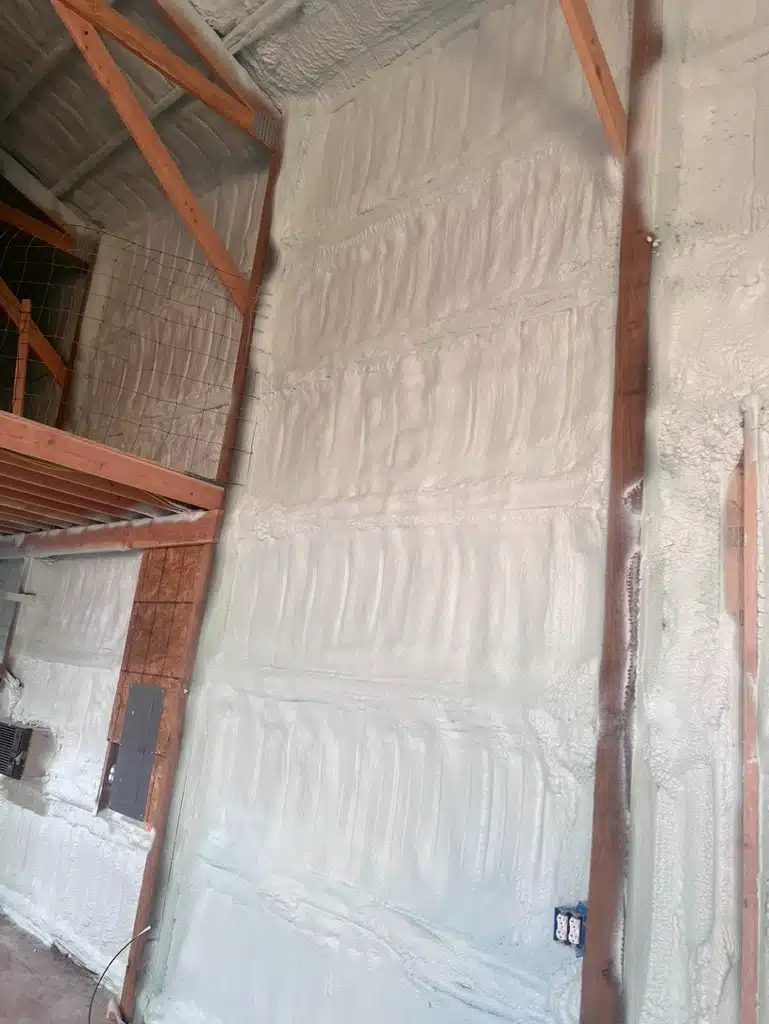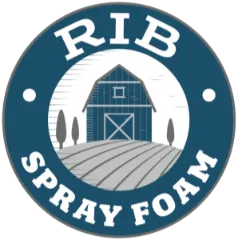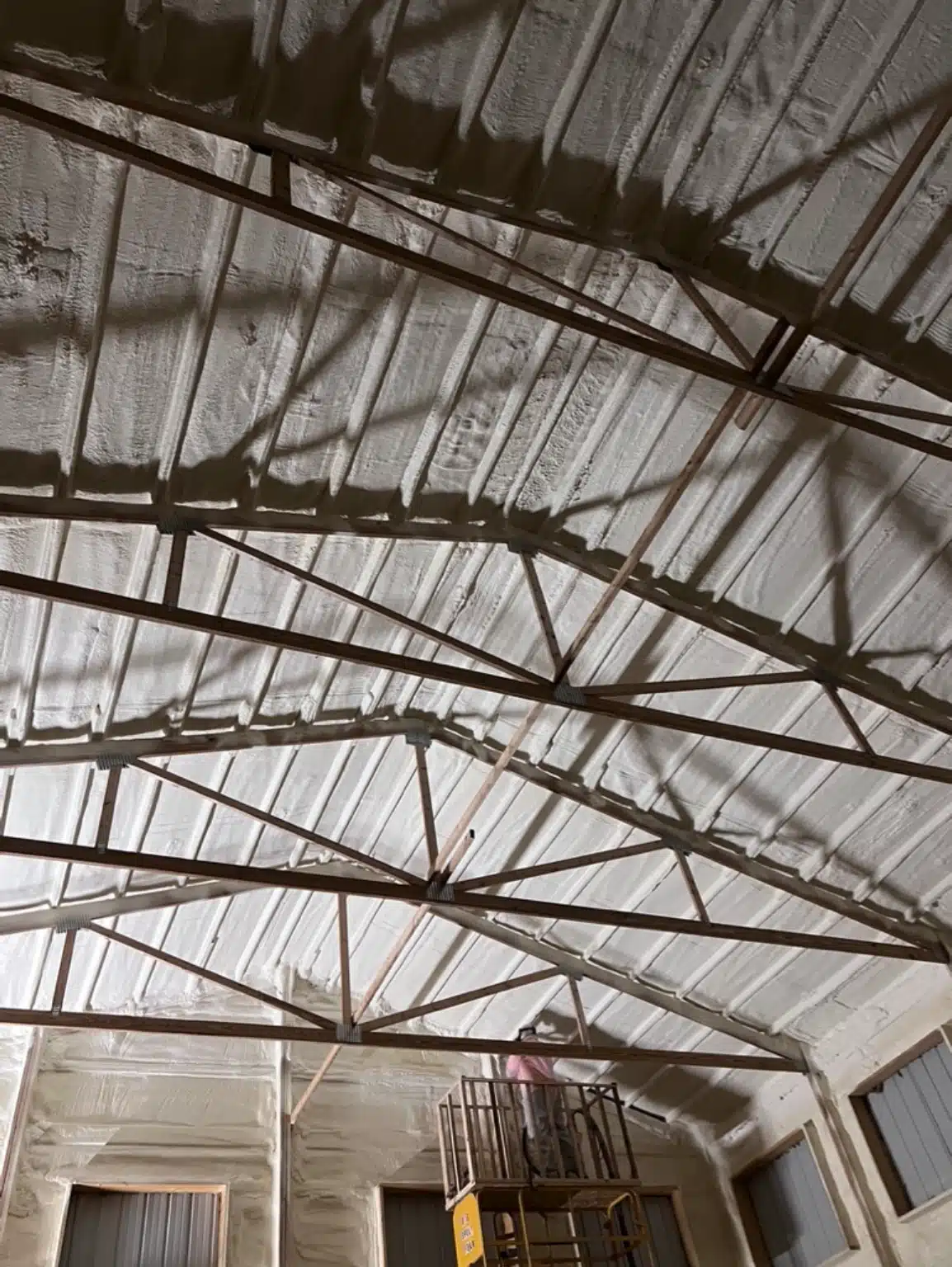Spray foam insulation delivers long-term savings by significantly reducing energy consumption. Compared to traditional materials, it forms an airtight seal that limits heat transfer, which helps maintain consistent indoor temperatures. This reduces the workload on HVAC systems, leading to lower energy bills and less frequent maintenance. Homes insulated with closed-cell spray foam often experience up to 50% lower energy loss.
According to the U.S. Department of Energy, heating and cooling account for 50-70% of energy usage in the average American home. Effective insulation directly impacts this figure. Spray foam offers higher R-values per inch than fiberglass or cellulose, improving thermal performance in both cold and warm climates.
[Rib Spray Foam Company] applies this insulation type across residential builds and agricultural structures, giving firsthand insight into its consistent long-term efficiency.
How Spray Foam Reduces Ongoing Energy Use
Spray foam insulation outperforms alternatives due to its ability to expand into cracks, creating a seamless barrier. This minimizes air infiltration, one of the leading causes of temperature fluctuation indoors.
Thermal Efficiency and Sealing Performance
| Insulation Type | R-Value per Inch | Air Sealing Ability | Moisture Resistance | Lifespan |
|---|---|---|---|---|
| Closed-Cell Spray Foam | 6.0 – 7.0 | Excellent | High | 50+ years |
| Fiberglass Batt | 2.9 – 3.8 | Poor | Low | 10-25 years |
| Cellulose | 3.2 – 3.8 | Moderate | Low | 20-30 years |
Bonus Tip: In northern Colorado’s temperature range, closed-cell foam provides superior resistance to moisture intrusion and prevents condensation in crawl spaces and wall cavities.
Long-Term Building Health and Structural Stability
Spray foam contributes to a building’s long-term durability. Closed-cell formulations add structural strength and reduce the risk of moisture-related issues like mold and wood rot. These benefits reduce maintenance and repair cycles over the building’s lifespan.
Reduced HVAC Wear and Maintenance
Less heat exchange means HVAC units run fewer cycles. Over time, this leads to extended system life and reduced repair costs. By insulating ductwork and attic areas with spray foam, air distribution becomes more efficient.
Bonus Tip: Homeowners often overlook attic penetrations as a key air leakage source. Sealing them with spray foam can have measurable effects on both comfort and system longevity.
Regional Impact: Northern Colorado Climate Considerations
In regions like Greeley and surrounding northern Colorado areas, temperature fluctuations and seasonal humidity demand insulation that can handle both extremes. Spray foam remains dimensionally stable during freeze-thaw cycles and deters mold growth caused by condensation.
Practical Data from Field Applications
| Application Area | Average Energy Reduction | Observed Performance in CO Climate |
|---|---|---|
| Attics | 30% – 50% | No seasonal degradation |
| Crawl Spaces | 25% – 40% | Prevents cold floor complaints |
| Pole Barn Walls | 35% – 55% | Maintains stable indoor temps |
| Residential Walls | 30% – 45% | Reduced air leaks, stable humidity |
Data based on internal testing and property monitoring by Rib Spray Foam Company in the Weld County area.
Things to Check Before Deciding
Evaluate the following to make an informed insulation choice:
- Building Age and Condition: Older homes often have irregular framing and gaps that benefit most from spray foam.
- HVAC Efficiency Goals: Consider whether reducing system strain is a high priority.
- Moisture Control Needs: Crawl spaces and basements are especially vulnerable and may require higher resistance.
- Project Scope: New construction allows full coverage access, which can optimize foam performance.

Services That Apply This Knowledge
The following services by Rib Spray Foam Company directly support long-term energy savings:
- Closed Cell Spray Foam: High-density insulation for maximum thermal performance and structural strength.
- Residential Spray Foam: Custom insulation solutions for homes to reduce energy waste and draft intrusion.
- Crawl Space Spray Foam: Prevents cold floors and moisture buildup in critical under-floor areas.
- New Construction Spray Foam: Full-access insulation during framing for maximum long-term efficiency.
Common Question Before Taking Action People Often Ask
How long before savings are noticeable?
Most homeowners report a drop in energy bills within the first heating or cooling season after installation.
Does it require regular maintenance?
Spray foam is permanent once cured. It doesn’t sag or degrade like fiberglass over time.
Will it work for existing homes?
Yes. Targeted retrofitting in attics, basements, and walls provides measurable savings even in older homes.
Can I insulate just one part of the home?
Yes. Prioritize high-loss areas like attics and crawl spaces for immediate impact.
Final Takeaways
Spray foam insulation significantly lowers energy usage, HVAC strain, and moisture-related risks over the long term. These savings are not just hypothetical; they are measurable in real-world use across residential and agricultural buildings. The most effective gains come from targeting key loss areas and selecting closed-cell spray foam for its performance consistency.
Evaluate building type, moisture concerns, and HVAC load reduction goals before choosing.
Talk to a Specialist Today
Rib Spray Foam Company provides expert-level application across a range of building types in Colorado. For questions or to discuss project-specific goals, contact via email at [email protected] or call (970) 518-2883.
FAQS
How can I confirm it’s working?
Use a blower door test or thermal imaging to measure air tightness and insulation effectiveness.
Does spray foam shift or shrink over time?
Closed-cell foam remains dimensionally stable for decades and does not shift under normal conditions.
Is it safe for long-term indoor air quality?
Once cured, it remains inert. Proper ventilation during installation ensures safe application.
Can it help control pests?
While not a pesticide, it seals entry points that rodents and insects might otherwise exploit.
What happens if I need to remove or access wiring later?
Professional installers account for access zones. Minor trimming is possible without full removal.



